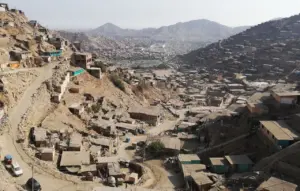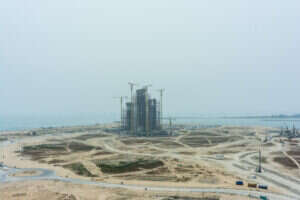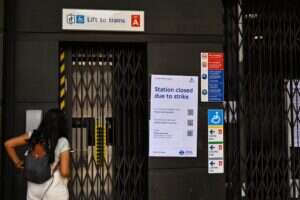This week’s round-up of urban stories we enjoyed elsewhere.
- Architecture is still dominated by men – in fact, in the UK, the proportion of women in the industry is actually falling. This piece at the Guardian asks: “What would our cities look like if they had been designed by women?” The author finds, unsurprisingly, that the answer goes far beyond “more women’s toilets”:
In a classic 1980 essay called What Would a Non-sexist City Be Like?, the American urbanist Dolores Hayden called for centres that would “transcend traditional definitions of home, neighbourhood, city and workplace”.
Since then, others have taken up the argument that a woman-friendly city would be more porous, the divisions between home and work less rigid, so that domestic work is acknowledged as a productive activity, and carers (of children, disabled relatives and older people) are less excluded from economic life.
- This piece from Fast Company magazine reimagines cities, too. It collects together suggestions on how to redesign the world’s fastest-growing and most unequal cities. One proposal, put forward by architects from Columbia University, would add eight new artificial islands to Hong Kong to deal with the city-state’s expanding population. From the piece:
Hong Kong is one of the most crowded cities in the world—with notoriously tiny apartments—but may soon have to find space for millions of new immigrants from mainland China. In a project called “Hong Kong Is Land,” designers propose adding eight new artificial islands to the territory. Each island, from the “Island of Resources” to the “Island of Surplus,” would represent a local value.
- This piece from Factor Tech, a technology and futurism magazine, features quite posibly the coolest invention we’ve seen this year: sideways elevators.

From the piece:
Elevators that don’t just move up and down but can also move from side to side have long been a sci-fi fantasy; but this is set to change.Now engineering company ThyssenKrupp has made this a reality with their magnet controlled elevator system MULTI.
The set-up sees elevators being able to move along horizontal shafts as they are no longer connected to ropes that pull them up and down. It also allows more than one cabin to be in each elevator shaft.
- Presumably in order to make a new, 95m long glass bridge in China look a little less terrifying, officials decided to take a bunch of really cute puppies there and photograph them.

Image: Ecns.cn via Shanghaiist.
The message, we’re guessing, is: “Look! The tiny puppies aren’t scared! Visit our bridge.” (it’s at the Shiniuzhai Scenic Spot, Pingjiang county, in case you’re interested.) This puppy looks pretty damn scared though:

Image: Ecns.cn via Shanghaiist.
Oh god they are so cute we really hope none of them fell off the bridge.
Images: Ecns.cn via Londonist.






